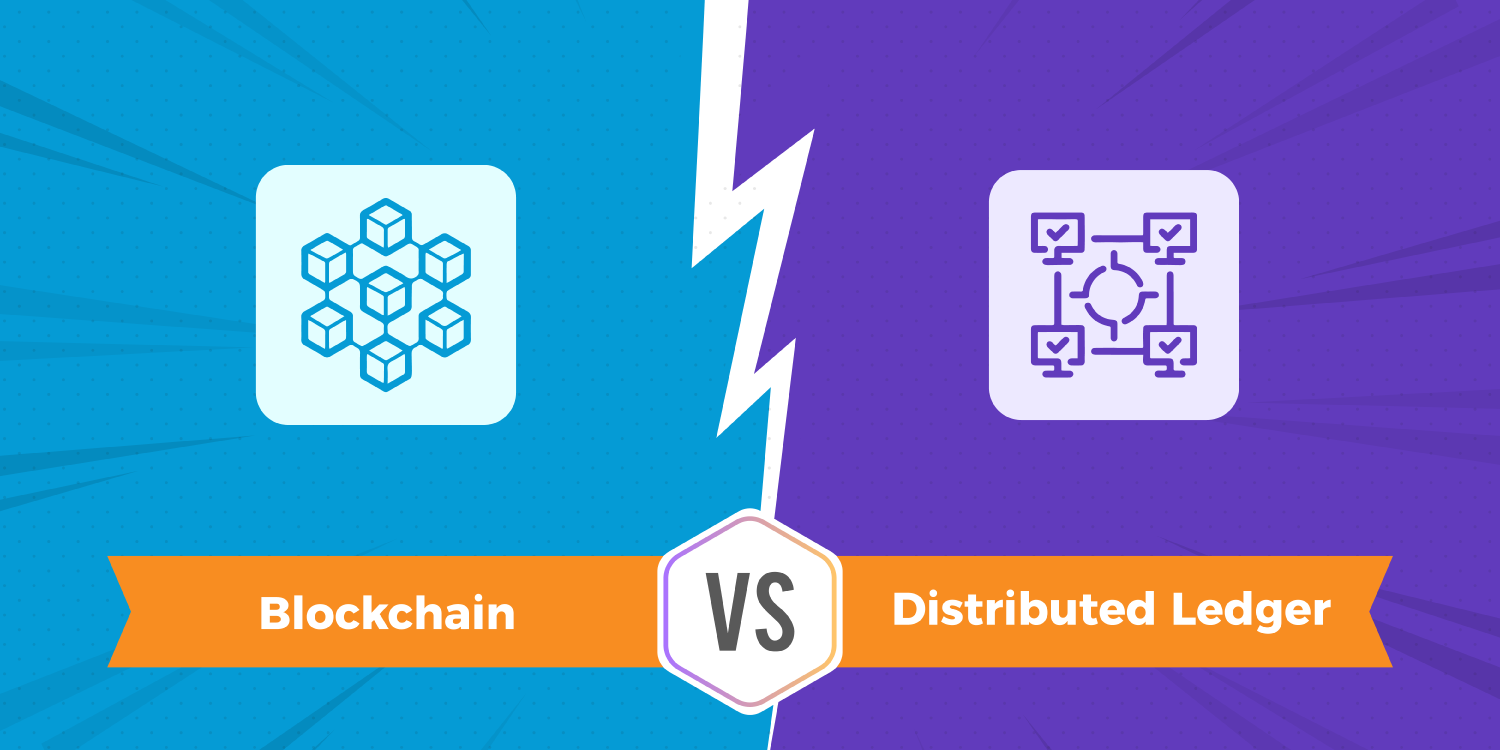Ever since the popularity of Bitcoin which started back in 2007, the concept of Blockchain chain technology has been one of the major trends in the tech world. Following that, with the new wave of blockchain integration in major industries from 2017, the concept of Distributed Ledger Technology (DLT) has been the next trending topic. However, there has been a common misunderstanding that they are one and the same, but these two technologies are mutually inclusive at times and completely non dependent in other cases. Let’s go ahead and explore the scenario behind Blockchain and Distributed Ledger Technology to understand their nature and how they have their own differences.
What is Blockchain?
“Blockchain technology isn't just a more efficient way to settle securities. It will fundamentally change market structures, and maybe even the architecture of the Internet itself.” Abigail Johnson
The famous digital currency that struck the market back in 2007 with a banging new authority in security, caused such an impacting wave in the cryptocurrency market by implementing the Blockchain technology . Blockchain is nothing but a data structure that is stored in the form of blocks and connected by cryptographic principles called as a chain. What this means in the non tech applications is that the blockchain does not work in the traditional method, rather implies a democratic method in handling its database. Here is where the term decentralised database comes in. In a typical network the entire database of all its users is stored in a single entity which consumes a lot of energy to perform which exchanging data as every single entry has to engage the main server. While in the case of a decentralised network every user works as a node which shares the network’s database in the form of blocks. So, in this scenario, when there is an exchange of data the entire nodal network works together eliminating the traditional system of holding a centralised database.
This system became the source of trust among its users as the transaction ledger is shared among its users in the network, which made the ledger transparent in nature. This means that the users are granted access to the information in the database. Additionally, Blockchain became immutable to hackers and there is no single entity or server that could be crashed.
This technology was very wisely implemented in the Bitcoin cryptocurrency to ensure its customers security as a prime trust factor. However in further advancements of Blockchain, this technology evolved into two types, namely public and private blockchain. The later type being the reason why major industry sectors are integrating Blockchain technology into their businesses.
Real World Application of Blockchain
Some of the applications of Blockchain platforms extend to more than just cryptocurrencies like Bitcoin include Ethereum, BigChainBD, IBM Fabric, Hydrachain, R3 Corda, Multichain, OpenChain, Chain Core, and many more.
What is DLT?
“The blockchain concept was pioneered within the context of crypto-currency Bitcoin, but engineers have imagined many other ways for distributed ledger technology to streamline the world. Stock exchanges and big banks, for example, are looking at blockchain-type systems as trading settlement platforms.” Anthony Scaramucci
Distributed Ledger Technology popularly called the DLT is similar to the concept of a decentralised database that was briefly explained in the Blockchain Technology. This system simply implies that there is no centralised authority to hold the entire database and the network. The database is rather distributed in the network itself making it a collective authority for the database. This property also makes the DLT a comparatively more secure network than the traditional networking method. This was widely accepted and became increasingly popular as transaction ledger was completely transparent and accessible to all the users in the network making this a democratic system of handling the database. As the authority is distributed in this process there was lesser chance for hackers to interfere. Although a DLT sounds like an aspect of blockchain in the term where decentralised database comes in, a DLT relies on a similar principle and not the exact same. Here is how a DLT works. This technology doesn't necessarily construct a chain of blocks to store the information and share amongst users in the network, rather it creates many servers as opposed to a traditional system of a single server entity, which will engage in the transaction and then communicate to ensure the most accurate data record.
However, this method was successfully implemented in Bitcoin in 2007. This implies that Bitcoin used DLT in their technology among various other options. This makes DLT mutually inclusive of Bitcoin or Blockchain. So, DLT can exist outside of a Blockchain Technology. This invention has modified into many applications in a variety of industries across the world.
Real World Application of DLT
Some of the famous application of DLT systems include Digital Asset Holdings, Hedera Hashgraph, IOTA’s Tangle network, peaq, and many more.
Conclusion
The take away from this blog is that Blockchain Technology and a Distributed Ledger Technology are neither the same thing nor interchangeable. However, every Blockchain has a distributed ledger system , but not every DLT is a Blockchain. But both these technologies use the concept of decentralisation and consensus algorithm. With this breakthrough in the tech world, many industries are seen integrating these systems in there business and their applications are evolving and adapting to many more economic sectors.

